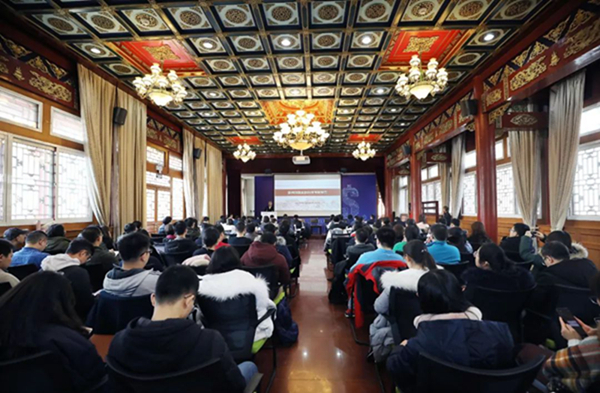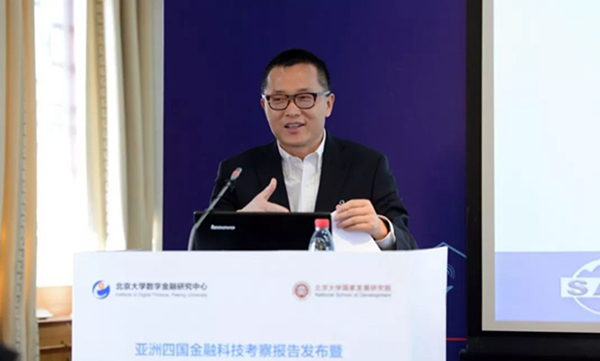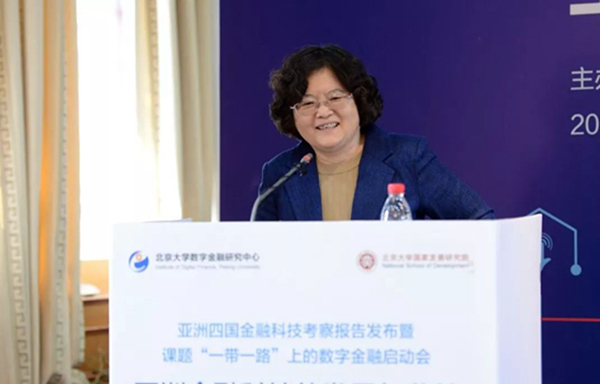
In recent years, the Institute of Digital Finance, Peking University organized a series of international exchanges and study activities, in order to define the relative position of financial technology in China in the international arena, bring in good practices, introduce successful practices out into the world, and promote the healthy development of global financial technology. Among the activities, a study group was formed to visit countries such as Singapore, Thailand and India in August 2018. The main visits of the study group included the Monetary Authority of Singapore, financial technology company ECP, the Bank of Thailand, financial technology company TrueMoney, Indian financial technology company Paytm, Bangladeshi financial technology company bKash, and Hong Kong payment agency AlipayHK, and also some of the business organizations that adopted the use of financial technology, in particular those that used cross-border payment tools. The study group focused on surveying the current situation and factors of formation of financial technology developments in other Asian economies, some of the financial technology business models, their effect on the real economy, the perspectives of regulating authorities and some of the specific policy measures, with emphasis on three questions in the survey: firstly, what are the regulatory and business philosophies and practices adopted by these economies that China can learn from? Secondly, can some of the technologies and models that were effective in China help these economies in the development of financial technology? Thirdly, is it possible to rely on financial technology to promote financial connectivity among the relevant countries and regions along the Belt and Road?

On February 20th, 2019, the Institute of Digital Finance held a launch conference for the study report entitled Financial Technology Development and Regulation in Asia , at the same time launching the research topic study of Digital Finance on the Belt and Road. The launch conference was hosted by Shen Yan, professor of the National School of Development and deputy director of the Institute of Digital Finance, Peking University. At the conference, deputy dean of the National School of Development and director of the Institute of Digital Finance, Peking University, Professor Huang Yiping, released the Financial Technology Study Report on Four Asian Countries (hereinafter referred to as the “Report”) and spoke in regard to the questions above. Subsequently, chief accountant of the State Administration of Foreign Exchange, Sun Tianqi, and former director of the Research Institute of Finance at the Development Research Center of the State Council, Zhang Chenghui, delivered keynote speeches. Associate professor of the National School of Development and senior researcher of the Institute of Digital Finance at Peking University, Xu Jianguo, launched the research topic of the Role of Financial Technology on the Belt and Road Initiative. The authors of the Report are Qiu Han, Wang Xun and Huang Yiping.

Huang Yiping

Sun Tianqi

Zhang Chenghui

Xu Jianguo
Overall impression on the financial technology industry in Asian economies
The standards of development of financial technology in Asia vary widely. Aside from Singapore and Hong Kong, most Asian economies started off in financial technology later than Mainland China, with a lower level of development and a relatively rudimentary business model. There are generally three prominent aspects of the financial technology industry in these economies: firstly, a common factor in the promotion of financial technology development is the insufficient supply of financial services in the formal financial sector. The emergence of new financial technology business models almost entirely resolved some of the shortcomings in the original financial system, with a particularly evident trait of inclusiveness. Secondly, the financial technology business models in these economies are relatively rudimentary, mainly because the local financial infrastructure is relatively underdeveloped and consumer financial literacy is relatively low, but changes are already rapidly taking place. Thirdly, foreign institutions are actively laying out groundwork in these markets, although most of them are still adopting the approach of strategic shareholding, but a competitive landscape has already taken shape in the field of third-party payments.
From the perspective of business models, the leading advantage of financial technology in China is evident, particularly in the field of payment, where mature financial technology in Chinese markets can be applied to these markets. Regulators and enterprises in other Asian economies also adopt a more welcome attitude towards cooperation with Chinese enterprises. However, business in these economies is also developing rapidly, especially with Amazon and Google rapidly expanding their financial technology business in the region, which may create substantial competitive pressure. Chinese financial technology enterprises should remain vigilant and be proactive in innovating in order to continue maintaining their leading position.
Suggestions for regulations over financial technology in China
The study group proposed the following policy suggestions for regulations on financial technology in China through the study of some practices adopted in other Asian economies: firstly, the Financial Stability and Development Committee of the State Council should coordinate with the relevant departments in formulating financial technology development plans; secondly, the various regulatory departments must establish the access criteria and issue licenses for financial technology enterprises, at the same time defining a set of standardized “regulatory sandbox” operational procedures; thirdly, the government should concentrate efforts on supplementing the shortcomings in the development of financial technology, particularly in strengthening the centralized management of government data and openness to external cooperation; fourthly, the government should rationally support international cooperation in financial technology and promote interconnectivity in financial technology for the Belt and Road Initiative. Strengthening international cooperation will not only help financial technology enterprises in China to further expand their business and continue to maintain their leading position, but also further promote interconnectivity in the field of financial technology.
Introduction to the research topic of the “Role of Financial Technology in the Belt and Road Initiative”
The global economy is facing a new trend at present. The Belt and Road Initiative, as a new form of open economic cooperation that runs throughout the Eurasian continent and connects the East Asian economic sphere to the European economic sphere, is providing new opportunities for China and many countries along the route. As John Hicks (1999) famously said, “The industrial revolution had to wait for the financial revolution.” The realization of the Belt and Road Initiative is also in urgent need of an “underlying foundational financial infrastructure” as a strong fulcrum of support.
In the world today swept up by the wave of the “new economy”, the field of financial technology, as one of the few areas in which China has already occupied a position of leading advantage in the future of global competition, is expected to become the fulcrum of support for the development of national markets along the Belt and Road. Countries along the Belt and Road and some of the less developed regions of China possess similar traits in factor endowment: relatively poor conditions of hardware infrastructure and underdeveloped finance and commerce. However, these countries possess a densely populated labor force and their potential for development should not be underestimated. Such a unique factor endowment structure and the broad market potential of countries along the route determine that China and countries along the route possess sufficient basis for cooperation. The development of financial technology may become a catalyst for realizing this broad market potential. The key is to find a suitable cooperation model, development model and business model.
This paper takes the “Role of Financial Technology in the Belt and Road Initiative” as its research subject. From the three aspects of the macro level, case study on a micro level and regulatory coordination, this paper combines theoretical analysis, data analysis and case studies to comprehensively examine the role of financial technology as a driving force for the Belt and Road Initiative.
Weiming Lake Digital Finance Research
The“Weiming Lake Digital Finance Research”WeChat account (idf_pku) is the official WeChat account of the Institute of Digital Finance, Peking University. The Institute of Digital Finance, Peking University was established in October 2015 with the approval of the Office of the President of Peking University. The institute is committed to academic, policy and industry research in the fields of digital finance, inclusive finance and financial reform, providing authoritative research and analysis to the public, professional theoretical guidance for industry development, and scientific policy references for government policymakers.
Since its inception, the researchers at the Institute of Digital Finance have independently or collaboratively developed and published four indicators of digital finance, launched a new finance book series, completed more than a dozen research projects, and published many academic papers and policy reports. The Institute of Digital Finance currently has 28 full-time and part-time researchers.